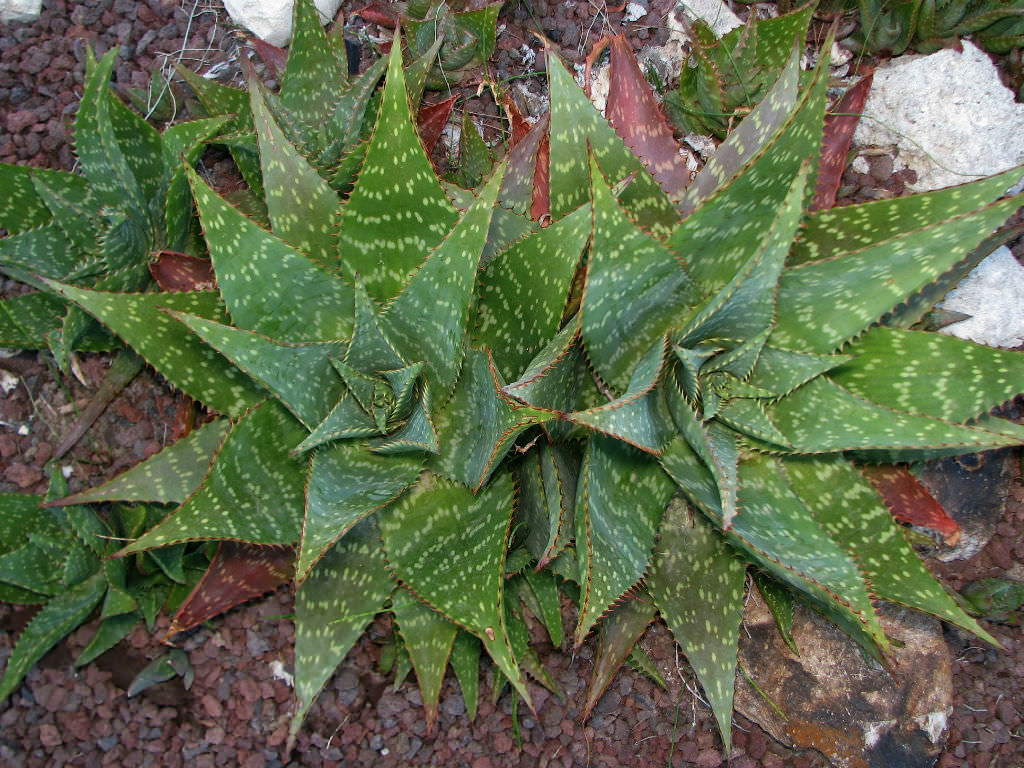Aloe Maculata is also famous as Soap Aloe. When this plant gets fully developed its height goes up to 18 inches tall and 24” in width. This beautiful plant has large, fleshy and green leaves along with classic red edges. In addition to this, it produces eye-catchy flowers in red or yellow colour that appears at the beginning of the summer to winter and at the time of spring.
Origin: This useful plant is first time introduced in South Africa, Zimbabwe and Botswana. Significantly, it is also widely grown in various other areas of the world such as in East and West Australia.
Scientific Name: Aloe maculata is the scientific name of this plant.
Common Name: Aloe Maculata is also famous for other names such as Zebra aloe and Soap Aloe.
Family: Asphodelaceae is its family.
Subfamily: Soap Aloe also has the subfamily Asphodeloideae.
Tribe: Aloeae is the tribe of this plant.
Genus: Aloe
Hardiness zone: The hardiness zone of soap Aloe is 8-11.
Evergreen: This zebra aloe is considered an evergreen plant.
Flower Color: The flowers of this plant grows in red or yellow colour.
Bloom time: The best time to grow this plant is in fall or winter.
Exposure: Full sunlight is needed for better development.
Water Moderately:
When this plant is facilitated with proper care and maintenance it grows perfectly. Like the other succulents, this plant also needs a typical amount of water. A proper schedule of water is very essential for this plant. The ideal way to provide water to this plant is a soak and dry method It is very important to prevent this plant from overwatering otherwise it will be damaged.
Soil: This tree can survive in drought soils. Significantly, it can grow well in various types of soils such as sandy, moist, gravelly or dry. But like others, it grows fully in well-drained soil.
Sunlight: It requires good sunlight for healthy growth. When it gets the required sunlight then its foliage turns into attractive red-pinkish colour. So it is very important to plant this tree in a location that gets good sunlight.
Size & Growth
Zebra aloe grows approximately 18” tall and 24” in width. Its leaves are lance-shaped and short along with little and sharp edges. In the beginning, its leaves are pale then turns into dark green colour.
Flowering and Fragrance:
Aloe Maculata develops racemes of flowers in cylindrical form. It grows up to 3” tall and its stems are branched at the end of the winter till spring. The time of blooming and the colour of the flowers depends upon the variety of the flowers. The available colours in these flowers range from orange to dark yellow and red.
Fertilizers:On a weekly or monthly basis, liquid fertilizers are best for zebra aloe. Most people use slow-release fertilizer in two to three months. Because they released their organic and nutrition in very little amount along with slow speed.
Pruning: It is very crucial to prune this plant at the start of its developing season that is generally considered the end of the winter and the beginning of the spring.
Soap Aloe Pest or Diseases: Interestingly, zebra aloe is one of the plant species that can resist diseases and are diseases free plants. But it is very important to provide it complete care and maintenance from scale insects and mealybugs.
Wildlife Value: Maculata aloe highly attracts hummingbirds and bees.
Uses: This plant is best to decorate patios, gardens and various other rocky regions.
Medical Uses:
The gel that is extracted from the aloe plant are anciently used by various ordinary people to cure various issues such as
- It is best to solve dry skin issues.
- Ideal to treat inflammation and respiratory issues.
- Moreover, it helps you a lot in blood circulation and endocrine system diseases.
Final Verdict:To conclude, it is not wrong to say that Maculata aloe is one of the most famous and widely grown plants all over the world. It is not only a disease-resistant plant but also very useful to cure many health issues. Zebra aloe is very easy to grow and simple to maintain. Hopefully, this article will give all the essential information related to aloe Maculata.

